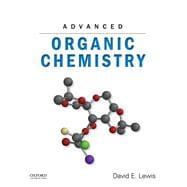Written by a master teacher, Advanced Organic Chemistry presents a clear, concise, and complete overview of the subject that is ideal for both advanced undergraduate and graduate courses. In contrast with many other books, this volume is a true textbook, not a reference book.
FEATURES
* Uses a unique method of categorizing organic reactions that is based on reactivity principles rather than mechanism or functional group, enabling students to see reactivity patterns in superficially widely disparate systems
* Emphasizes fundamental physical organic concepts that reinforce themes, giving students the foundation to understand both mechanisms and synthesis
* Covers asymmetric methodologies, a topic that is now ubiquitous in the current literature
* Numerous in-chapter worked problems and end-of-chapter additional exercises allow students to apply concepts as they learn them
* More than 2500 references to the primary literature in the body of the book(along with another 750 references in the problems) encourage students to become familiar with real scholarship as they master the concepts
* Brief historical vignettes about relevant chemists reinforce a historical and humanizing approach to learning science








